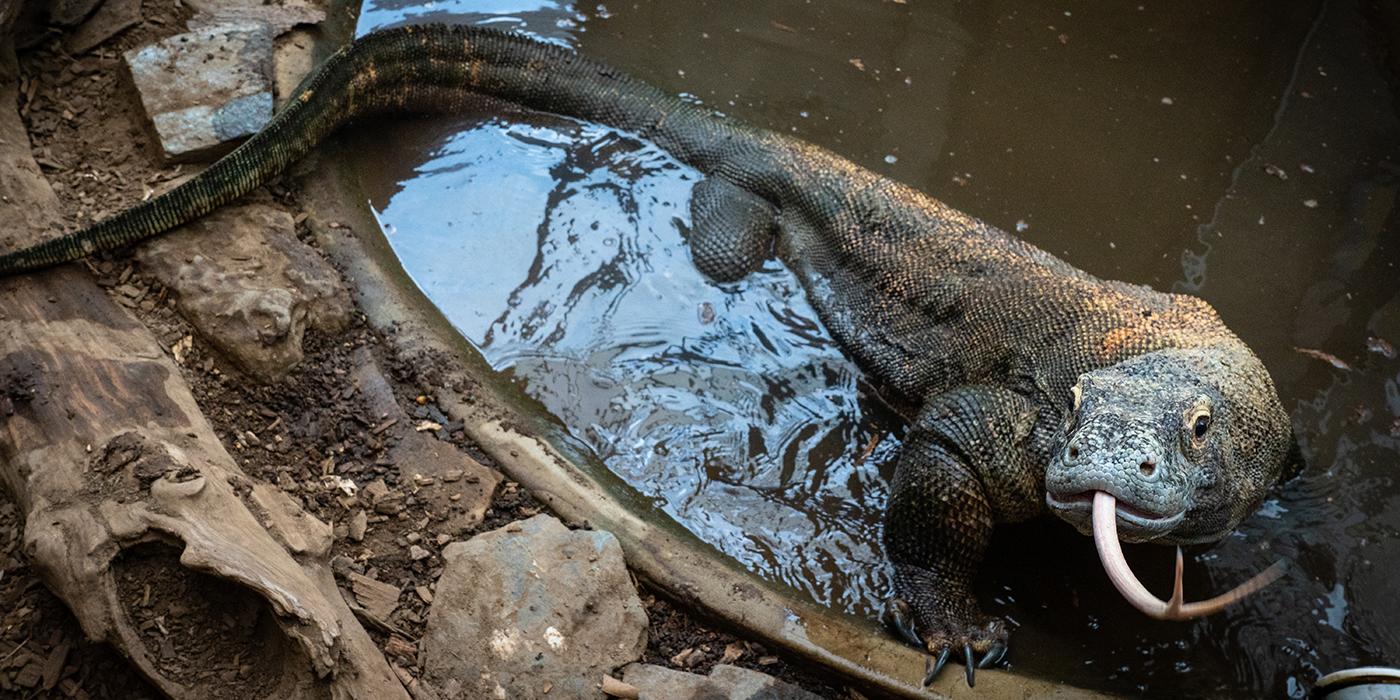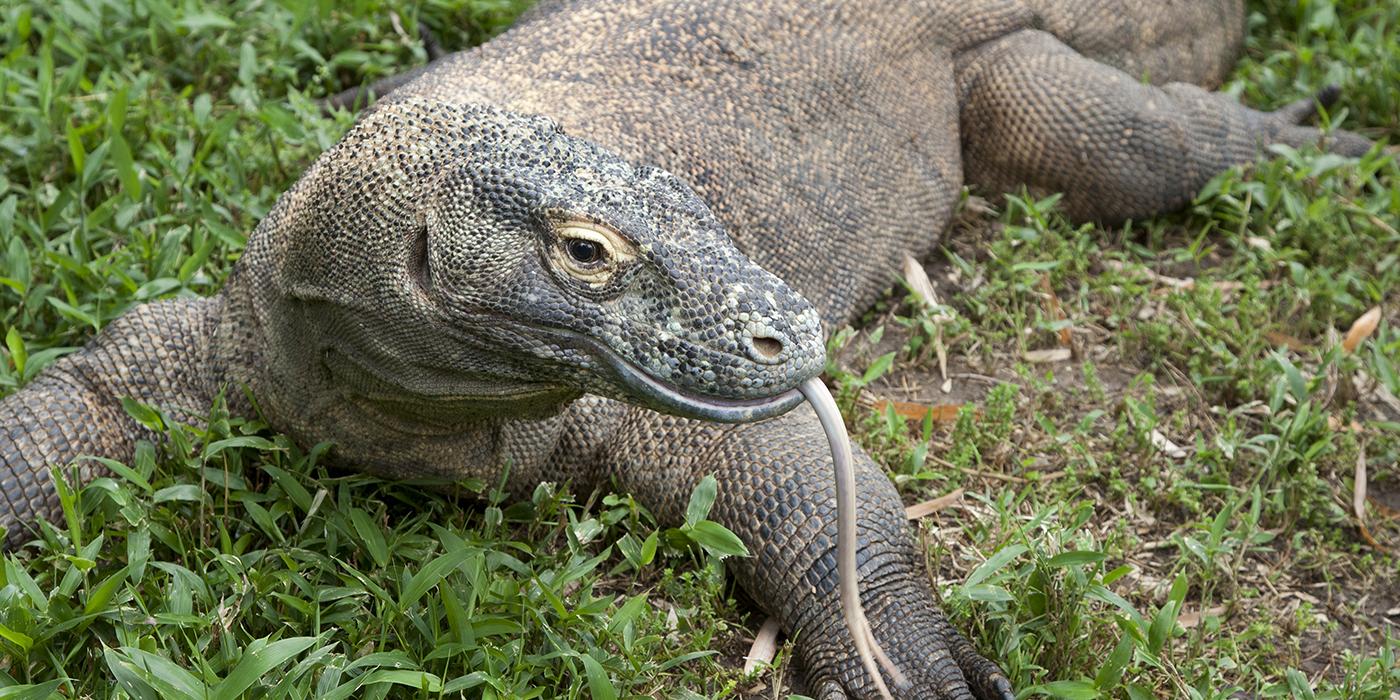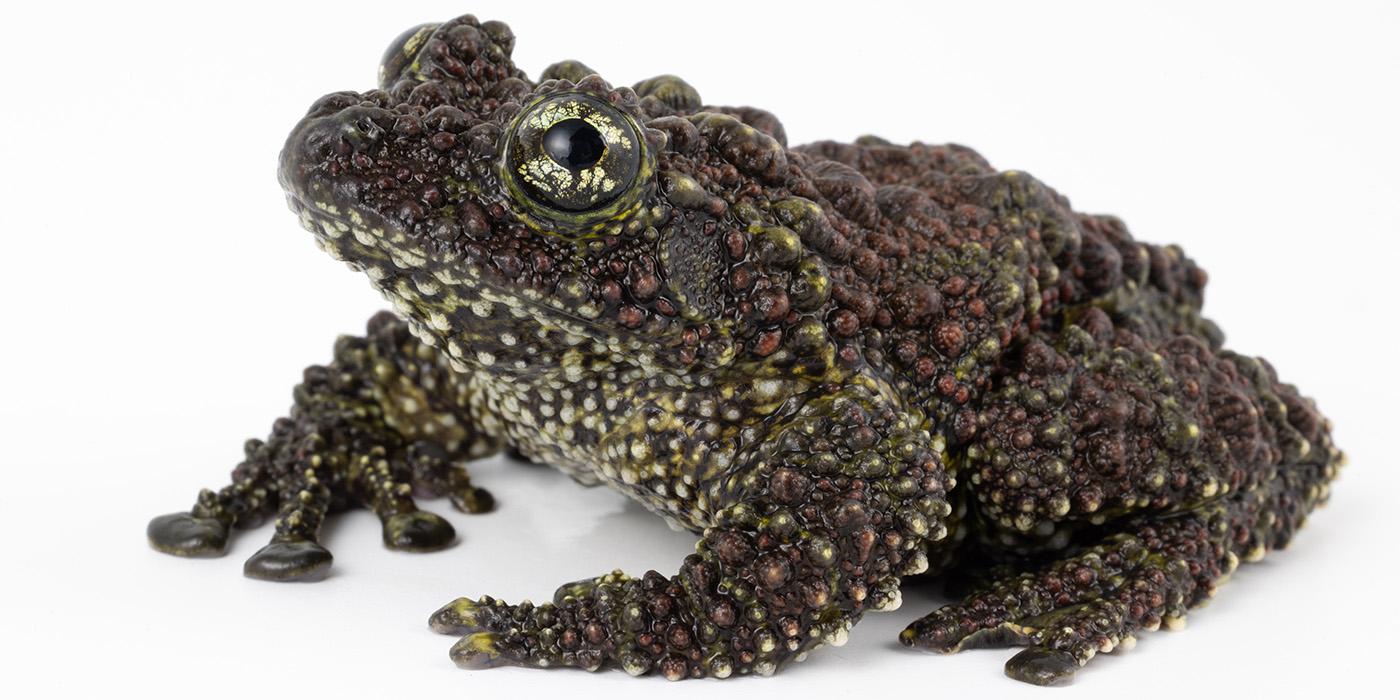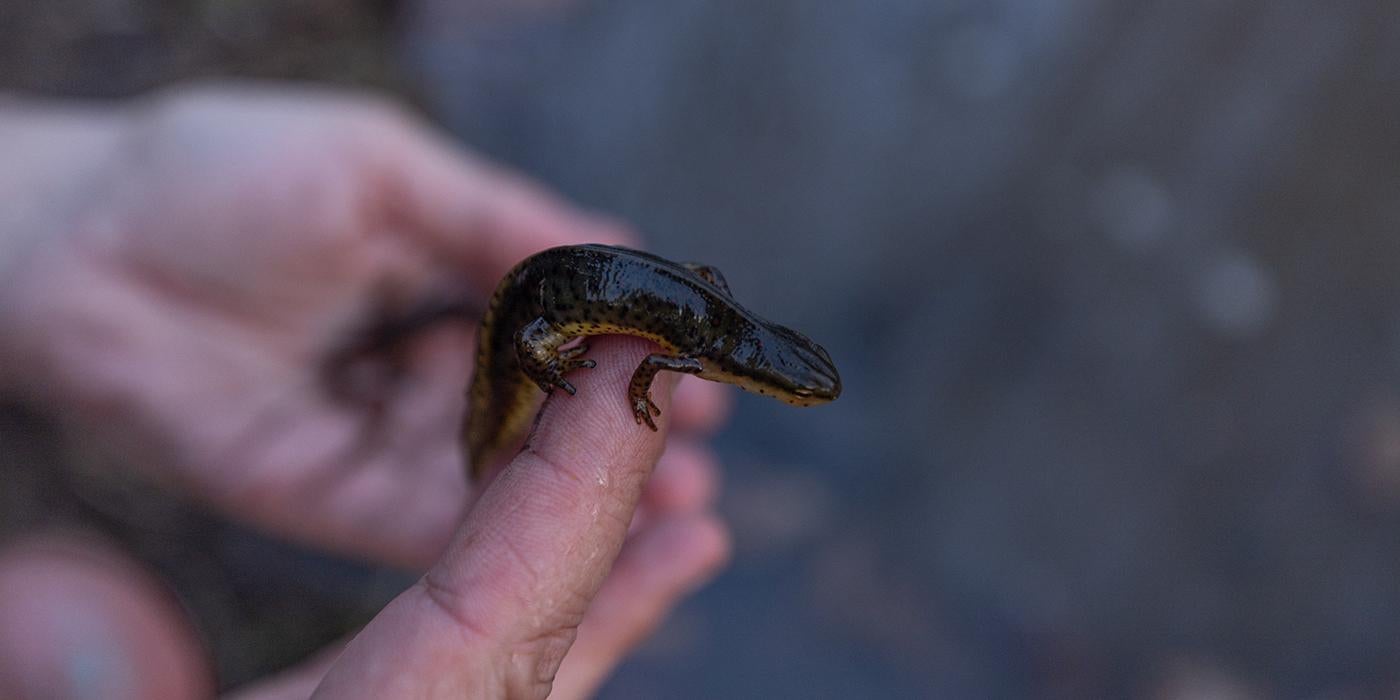Meet Our Komodo Dragon, Murphy
Join us in wishing a very happy hatchday to our Komodo dragon, Murphy! Our calm, laid-back lizard turns 25 years old today. He hatched Oct. 12, 1998, at Zoo Miami, and arrived at the Reptile Discovery Center when he was just shy of 9 months old. In this Q+A, keeper Sara Hasenstab shares her perspective on what makes Murphy an amazing ambassador for his species.
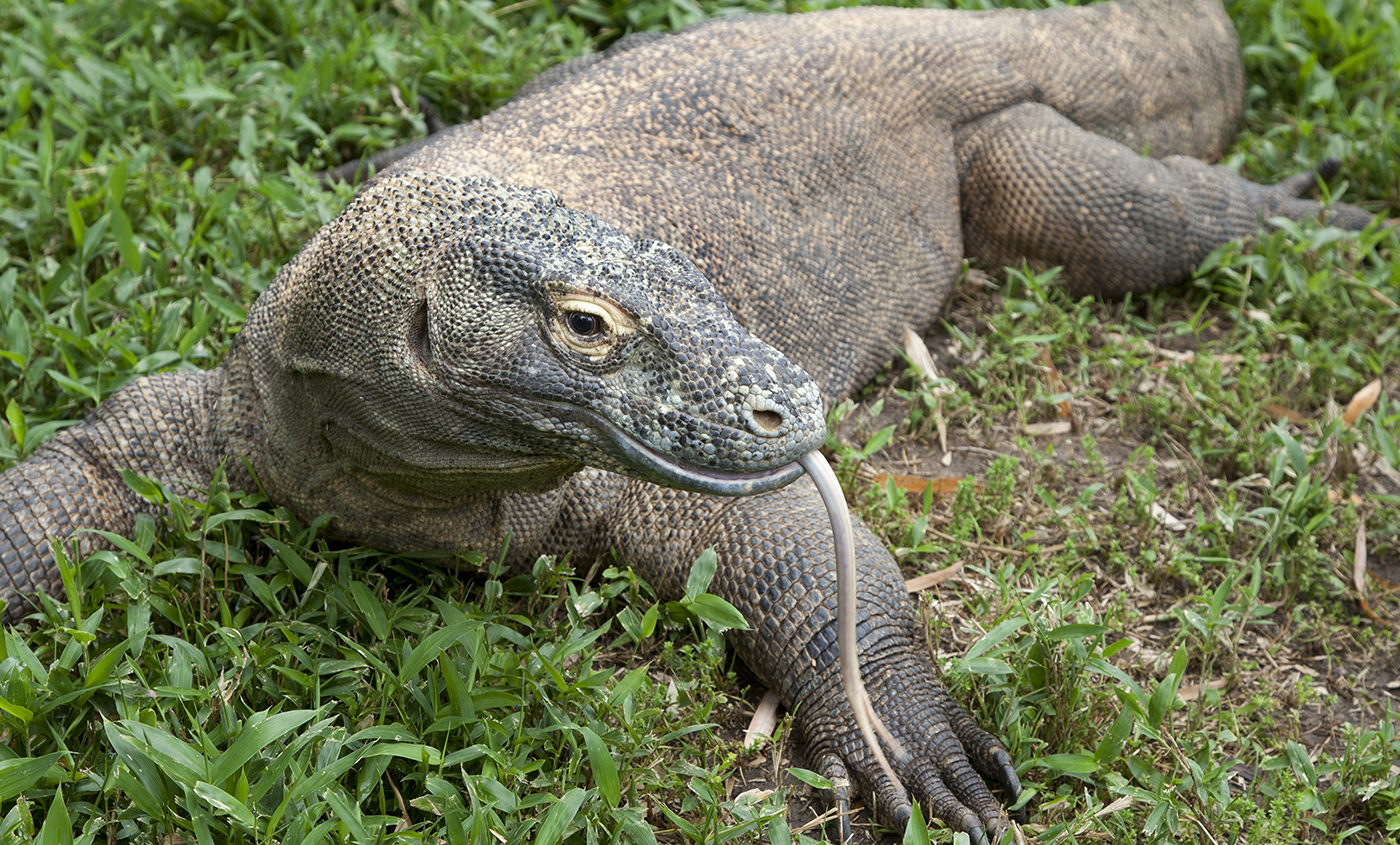
What do you find fascinating about Komodo dragons?
Komodo dragons are legendary for their venomous bite. They have a mouth full of 60 serrated, razor-sharp teeth that curve backwards to help them tear through flesh. Like sharks, they shed teeth throughout their lives, and new ones grow in to replace the old.
Another of my favorite facts is female Komodo dragons can reproduce sexually or asexually—with or without a male. This is called facultative parthenogenesis, and it comes in handy when an animal is trying to repopulate an area and cannot find a mate. Our young male Komodo dragon, Onyx, was produced this way!
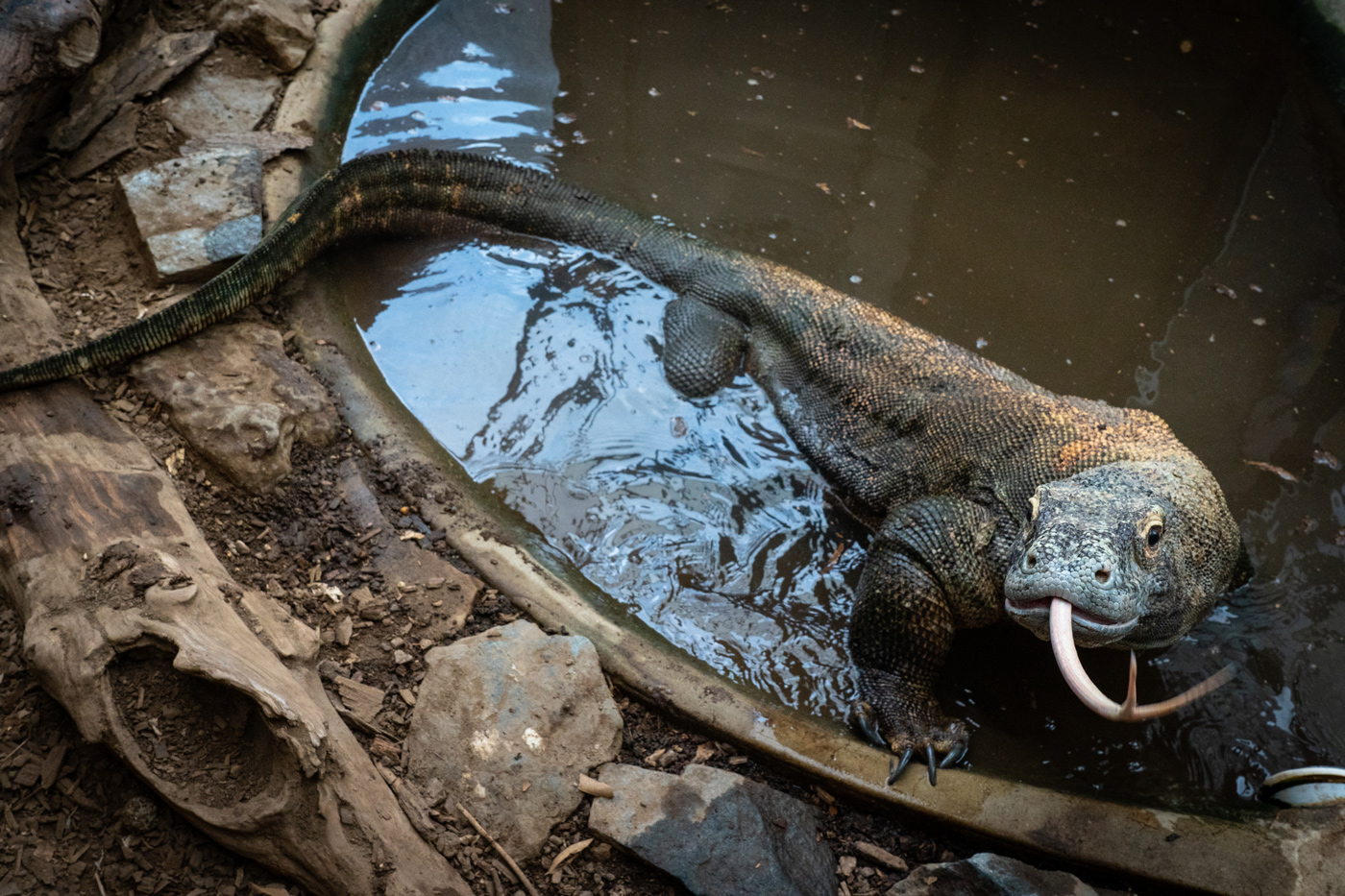
What do you enjoy most about working with Murphy?
We are very lucky to have three dragons—Murphy, Onyx and Marigold (a female)—who have been interacting with keepers from a young age. In my experience, all of them are very curious.
Of the dragons we care for, Murphy is the most laid-back and has a calm demeanor. This allows us to share an enclosure with him when we need to clean, conduct our daily health checks, or work with our veterinary team to administer treatments. While I never forget that he’s a dangerous animal, it is a dream come true to be able to interact closely with the largest lizard in the world.
One of the things I love about Murphy is the way he always perks up when he sees one of us coming to the door—especially if we’ve got snacks for him! He doesn’t seem to mind us being in his habitat. Usually, he watches us scrub his pool, clean the exhibit glass and trim the trees while he rests. Sometimes, he will get up and “supervise” us as we go about our duties. He seems to enjoy taking a dip in his nice, clean pool and making it dirty again!
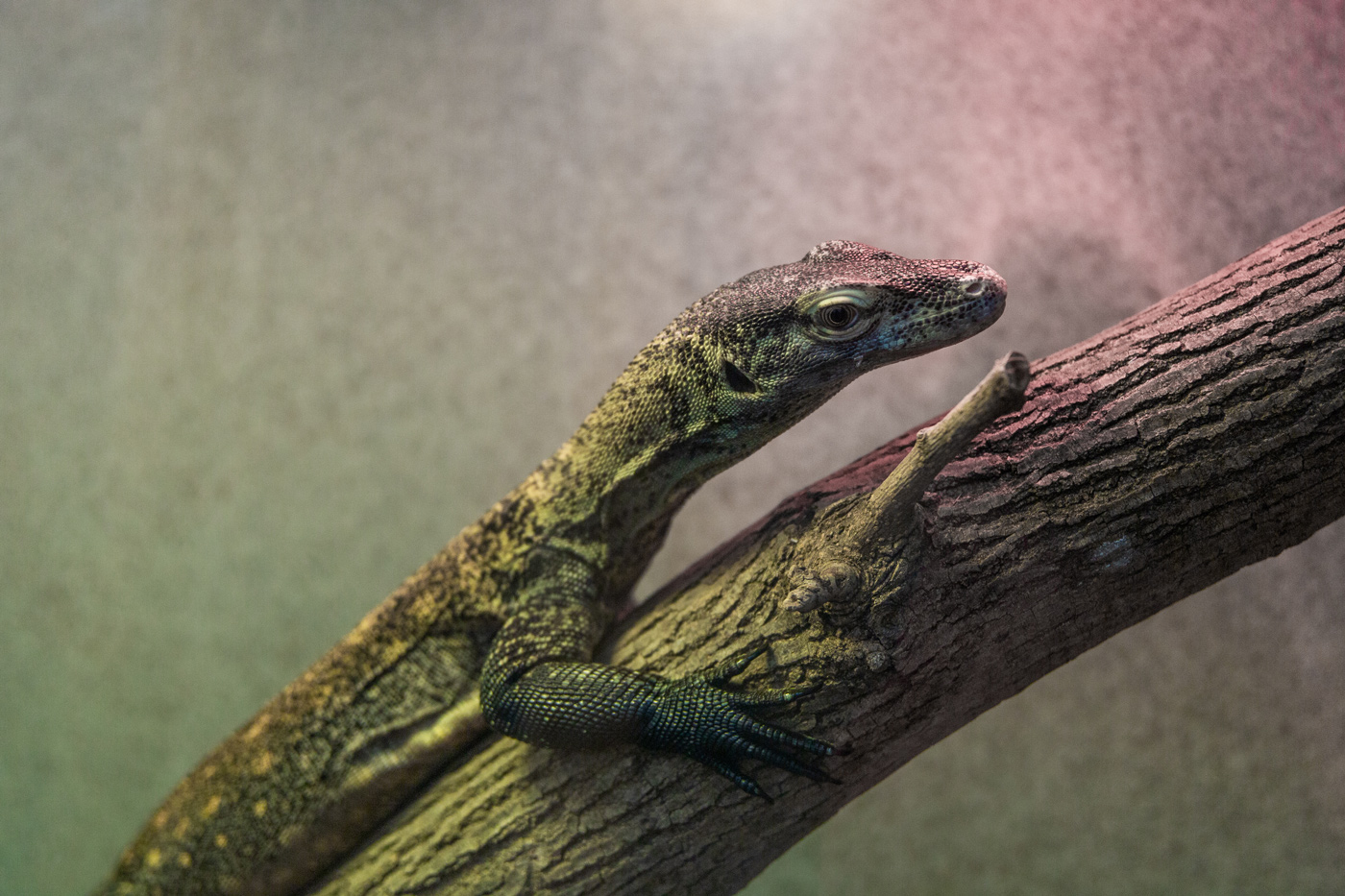
What are Onyx and Marigold’s personalities like?
Onyx is very similar to Murphy in his chill demeanor, but prefers to watch us clean his habitat from wherever he's perched. Visitors can see him inside the Reptile Discovery Center; once you enter the building, he lives in the first enclosure on the left.
Marigold is extremely curious about every single thing we do, and always wants to come over and investigate. She is very willing to participate in training sessions, and seems a bit more stubborn than the boys when she wants something. She currently lives behind the scenes.
Does Murphy have a favorite enrichment item?
Enriching Komodo dragons can be challenging, in part because they try to eat everything. So, much of our enrichment is food-based, and we rotate our offerings. Occasionally, we will offer a portion of a carcass that is too large for him to eat whole. This encourages him to use his natural behavior of tearing bits off, which helps work his neck muscles. He also spends lots of time foraging around his habitat for any food items he missed!
On warm days, Murphy has access to his outdoor habitat. He likes to explore and test out new substrates (ground cover) that we’ve added to his enclosure.
What training do you do with Murphy?
An important aspect of caring for Murphy is training him to voluntarily participate in his own healthcare. We use positive reinforcement, a type of operant conditioning where we pair desired behaviors with rewards in the form of attention or food treats.
He doesn’t have to participate, of course, but often will choose to do so since he is very motivated to receive some extra snacks! These interactions also help Murphy bond with us and build trust in us as his caretakers.
Murphy is trained to participate in a variety of medical procedures, including awake radiographs and blood draws. Like many aging animals, he has osteoarthritis—a degenerative disease affecting joint cartilage and the underlying bone with associated pain and stiffness. To keep him comfortable, our veterinary team conducts photobiomodulation (laser) therapy treatments two times a week to ease his discomfort. He seems to like the warmth on his joints.
As his reward for participating, he receives treats throughout his time in the training crate and after we have left the enclosure for any free-contact procedures. He also gets scrubbed down with a stiff bristled brush while we are doing anything involving direct touch.
Why is this training important?
Thanks to our positive reinforcement training sessions with Murphy, we can avoid having to put him under anesthesia for most health exams and procedures. Putting any animal under anesthesia comes with risk, and this is especially true for reptiles. It’s safer and less stressful for Murphy to be awake during certain procedures, and it’s also safer for us if he’s calmly participating.
At 25 years old, Murphy is considered geriatric for his species, as the median life expectancy for male Komodo dragons is around 19.5 years of age. Due to his advanced age and history of arthritis, he requires more frequent physical exams.
These training sessions allow us to get a good picture of how Murphy’s arthritis is progressing. The laser therapy treatments allow us to keep him on a lower dose of pain medications, too, which is better for him long-term. By taking routine radiographs and blood draws, we are able to evaluate how his body is reacting to medications. Our veterinary team bases his treatment plan on those diagnostics and our daily observations about his behavior.

I want to help Komodo dragons! What can I do?
Komodo dragons are native to a few Indonesian islands—Komodo (of course), Rintja, Padar and Flores. They live in tropical savanna forests but range widely over the islands, from beaches to ridge tops.
Being an island species, they have nowhere to go if they lose their habitat due to natural disaster or human interference. Rising sea levels have already shrunk the Komodo dragons’ habitat, and increased tourism to Komodo National Park is becoming a challenge. Occasionally, individuals try to smuggle young Komodo dragons off the islands for the pet trade. Illegal poaching threatens this vulnerable species, too.
The good news is, you can help! Support organizations like the Smithsonian’s National Zoo and Conservation Biology Institute that research better ways to protect and care for this animal and other endangered species. Practice ecotourism when you’re traveling! Support, visit or volunteer with organizations that protect wildlife whenever possible, and avoid buying products made from animals, which could bolster poaching and the illegal wildlife trade. Also, share the information you learn about our Komodo dragons with others so they can appreciate this amazing species!
Want to keep up with our Komodo dragons? Get to know our younger male, Onyx, in this keeper update! And, leap into learn more about this lizards in How Dangerous Are Komodo Dragons? And Other Komodo Dragon Facts.
Related Species:

